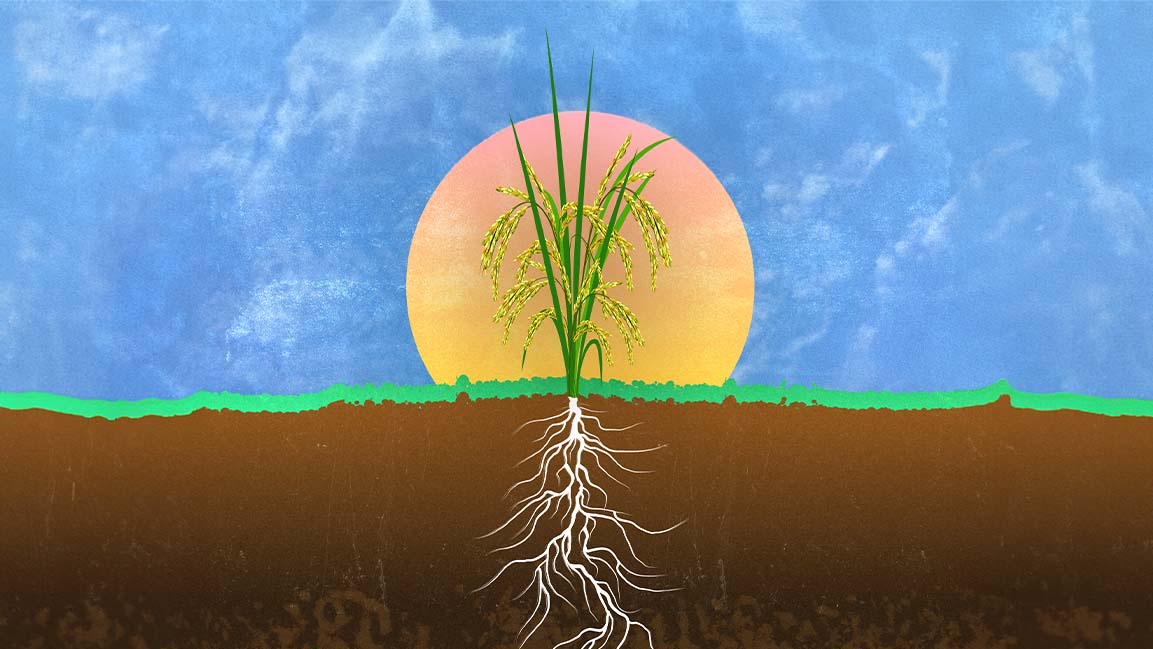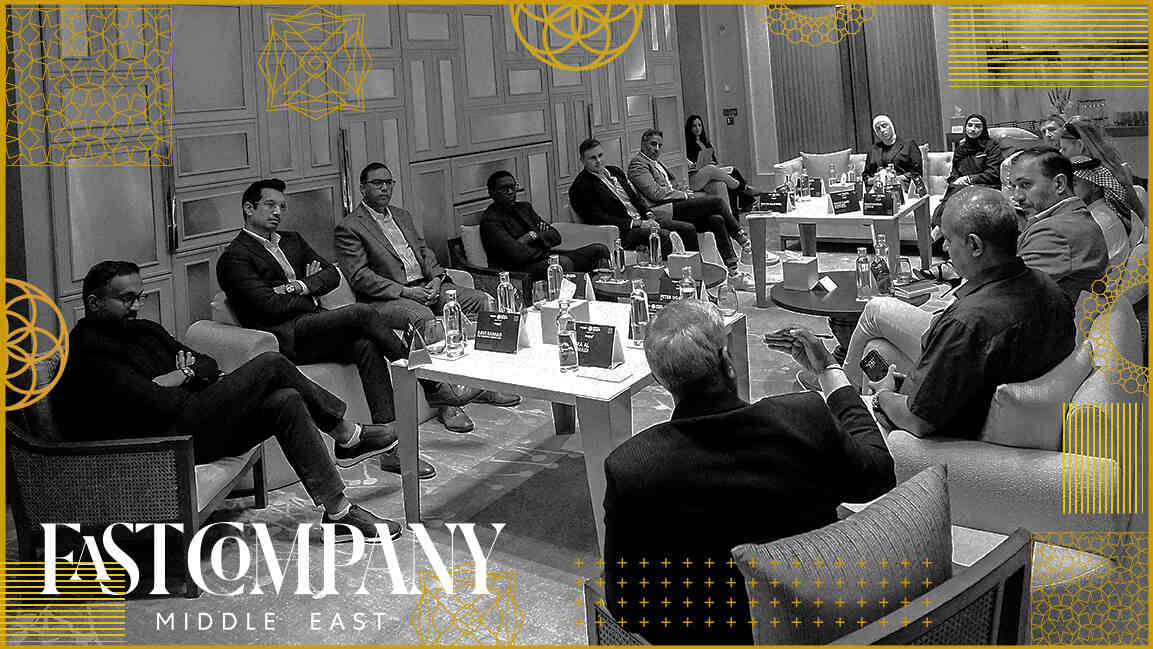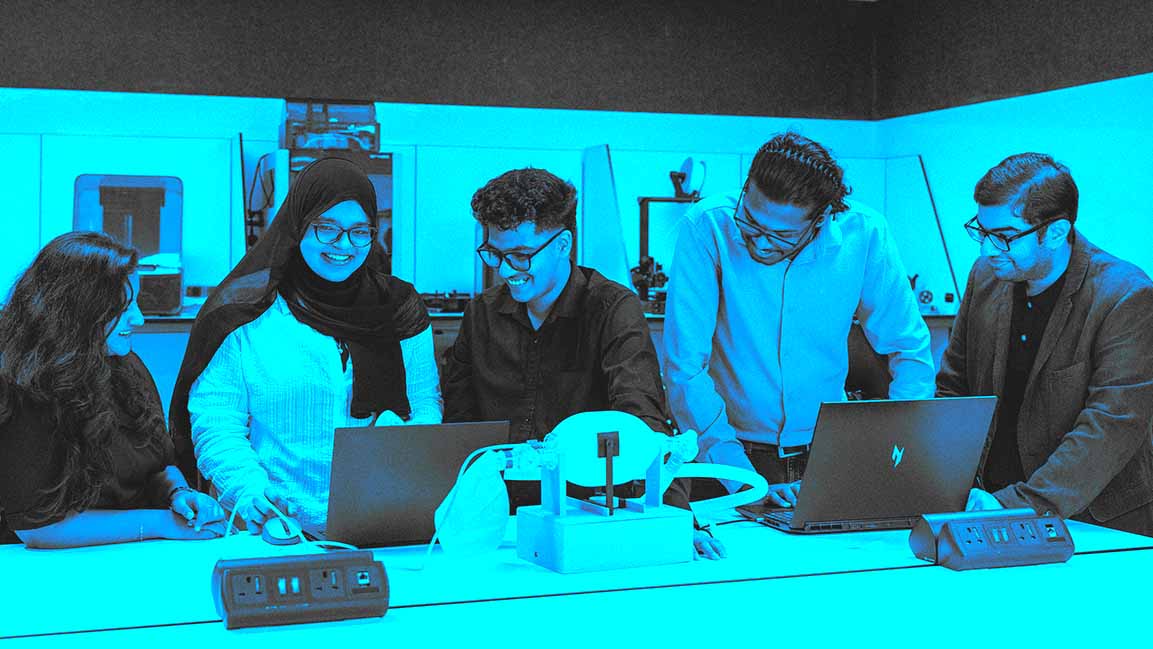- | 9:00 am
Regenerative agriculture is the future of farming – and it’s taking hold in the MENA region
Farmers in the region can bring depleted soil back to life – and boost food security

Charbel Ahmed is not a typical farmer and doesn’t practice typical farming. His grassy farm on the outskirts of Beirut has four-legged creatures—a sheepdog, a few cows, and dozens of goats—restoring soil resiliency and maintaining the farm that grows wheat, maize, chickpeas, and numerous other vegetables.
The real stars are the Baladi goats, who spend their days nibbling at the assorted grasses. Chickens also peck away alongside them.
Since their arrival on the farm in 2019, the goats have kept it free from weeds, rejuvenating the soil by aerating it with their hooves, and fertilizing it with nutrient-rich droppings.
Ahmed, a techie who quit a 9-5 job to farm, is part of a growing movement in the Middle East and North Africa region that practices regenerative agriculture, or regen ag for short.
He says this is the next chapter of farming. “If we’re going to positively influence agriculture in the country and region, this is how it is.”
Farms like this are becoming institutes of urban agriculture in the region. They impart valuable lessons about agriculture and sustainability, especially when the region faces food insecurity, desertification, land degradation, water scarcity, and, of course, climate impacts.
AFFORDABLE AND SUSTAINABLE
The idea is that following the basic principles of regenerative agriculture—not disturbing the soil, keeping it covered, maintaining living roots, growing a diverse range of crops, and using grazing animals—can regenerate depleted soil and produce nutritious food.
“The fundamental impact of regenerative farming is how it offers affordable ways to sustainably improve soil fertility and humidity for better crop and livestock yields while strengthening it against erosion, to improve its resilience to climate variability,” says Ismahane Elouafi, Executive Managing Director of CGIAR, and formerly chief scientist of the Food and Agriculture Organization of the UN.
“It halts or even reverses challenges such as soil degradation, water scarcity, and biodiversity loss, all key factors of desertification,” she adds.
This transition is urgent in the region, where up to 70% of the land is now degraded.
“Conventional agricultural methods relying on synthetic pesticides and fertilizers have adversely impacted soil health, increased carbon emissions, and exacerbated water inefficiencies,” says Sanjay Borkar, CEO & Co-founder of FarmERP, an agtech platform.
Regenerative farming addresses critical issues by enhancing soil health through crop rotation, cover cropping, and reduced tillage. “Crucially, it enhances the soil’s capacity to retain water, a vital attribute in a region grappling with severe water scarcity and challenging climatic conditions,” adds Borkar.
In the past decade, concerns over sustainable farming have grown in the region.
“There is a recognition that addressing food security concerns cannot be at the cost of the environment,” says John Keppler, Executive Chairman of iyris, formerly Red Sea Farms, an agtech company based in Riyadh.
“As a result, there has been an increasing focus on innovation driving the capability and capacity to produce more food in the region, where up to 85% of fresh produce is imported while using fewer resources.”
Large tracts of land across the region that could be used for cultivation are unproductive, and regenerative farming has the potential to increase the area of land farmed, which will directly impact protecting food security in the region, adds Keppler.
NET POSITIVE
Many conventional farmers are now trying to adopt one or two of regenerative farming principles, driven by advances in agrotechnology and the urgent need to tackle desertification and salinization.
“Advances in grazing management, crop diversification, cover cropping, and minimal tillage enhance soil health, protect organic matter, and improve water efficiency,” says Elouafi. “Integrating crop and livestock management with conservation agriculture offers rural farmers affordable and sustainable ways to manage their land and animals.”
It improves farmers’ lives and societies, says Christine Gould, Founder and CEO of Thought for Food. “It is about net positive impact.”
“On my recent visit to Emirates BioFarm, I saw sand transformed into fertile soil. It was amazing,” says Gould, adding that she mentored a startup from Saudi Arabia’s KAUST University, developing a biological approach for fertilization relevant to regionally important crops.
“This exemplifies the region’s potential in this space. It can ‘leapfrog’ in regen ag and food systems’ transformation.”
In Morocco, inexpensive conservation agriculture techniques have increased wheat yields by up to 19%. “And converting greenhouses to solar energy and root cooling systems can reduce energy and freshwater consumption by up to 80%,” says Elouafi.
BENEFITS FOR FARMERS
Many farmers are starting to look at their bottom line as the price of fuel and fertilizer rockets, and studies show that regen ag takes some time and effort to transition but ultimately saves costs.
“Improving soil health boosts yields and reduces reliance on chemical inputs, thereby lowering production costs. Enhanced soil structure and increased organic matter contribute to improved water retention,” says Borkar. “This approach fosters long-term sustainability and resilience, ensuring consistent agricultural productivity.”
But it’s not only about cost savings, though.
“Regen ag improves the taste, quality, and nutrition of foods grown because they are in healthier soils. It drives innovation and makes farming a vibrant sector filled with possibility, attracting new generations into the agricultural space. It helps localize food production and reduce reliance on imports,” says Gould.
Gould adds that it opens up new market opportunities for farmers with improved crop quality and nutrition. “Farmers have the potential to access premium pricing. This boosts their income and elevates the standards of produce and foods available to consumers.”
THE ROLE OF TECH
Technology plays a pivotal role in advancing regenerative farming.
Examples include advanced sensors and data analytics that help farmers optimize water use, monitor soil health, and track growth in real time; satellite and drone tools for early warning about pests and other threats; automated machinery to enhance precision in planting, watering, and harvesting; and soil testing-based fertilizer advice.
Experts say investing in and scaling these technologies is crucial for sustainable agriculture and helps farmers make informed choices.
“The Middle East has a wealth of experience with fully optimized controlled environment agriculture, and the same principles are being applied to regenerative agriculture,” says Gould. “Technology can help replace harmful pesticides and fertilizers with microorganisms and other biological crop inputs to make soils healthier and enhance productivity. We are seeing 2000-year-old technology like biochar making a resurgence. This will go further than ever thanks to AI-powered digital platforms that facilitate the exchange of best practices and innovations among farmers.”
The International Center for Agricultural Research in the Dry Areas is working to restore watersheds in the Badia Areas of Jordan, utilizing advanced technology to control and monitor gully erosion.
Several CGIAR centers in drylands are collaborating on an Integrated Desert Farming Program, selected as an Innovation Sprint that holistically combines technologies such as climate-smart crops, solar greenhouses, and aquaculture to regreen desert areas and turn them into food production powerhouses.
Innovation Sprint is a groundbreaking initiative of the Agriculture Innovation Mission for Climate (AIM for Climate), which focuses on increasing and accelerating investment and support for climate-smart agricultural innovation.
“There are lots of interesting projects in the region that demonstrate the impact of tech-driven practices: using treated wastewater for irrigation in Egypt enhances soil fertility, rainwater harvesting in Jordan restores degraded rangelands, and agroecological practices in Morocco improve soil organic matter, while precision irrigation prevents soil salinization, and strategic crop selection maintains soil health,” says Elouafi.
Meanwhile, iyris with Saudi Aramco is investigating how to utilize high-saline water, an abundant resource, to develop commercially viable salt-resistant fodder. “If saline water or wastewater from agriculture could be re-utilized in this way, large tracts of land can be sustainably regenerated into productive farming land,” says Keppler.
Creating an environment that supports innovation and farmer-centric solutions is essential for ensuring that regenerative agriculture delivers the broad and lasting benefits it can and builds a sustainable agricultural ecosystem in the region.
“Farming communities that see a sustainable future in farming will reduce urban drift, and of course, where land becomes productive again, it can slow desertification as microclimates will be created around these farming activities,” says Keppler.
“The future of farming, using less resources more sustainably, is how this region will achieve greater food security,” adds Keppler.








































